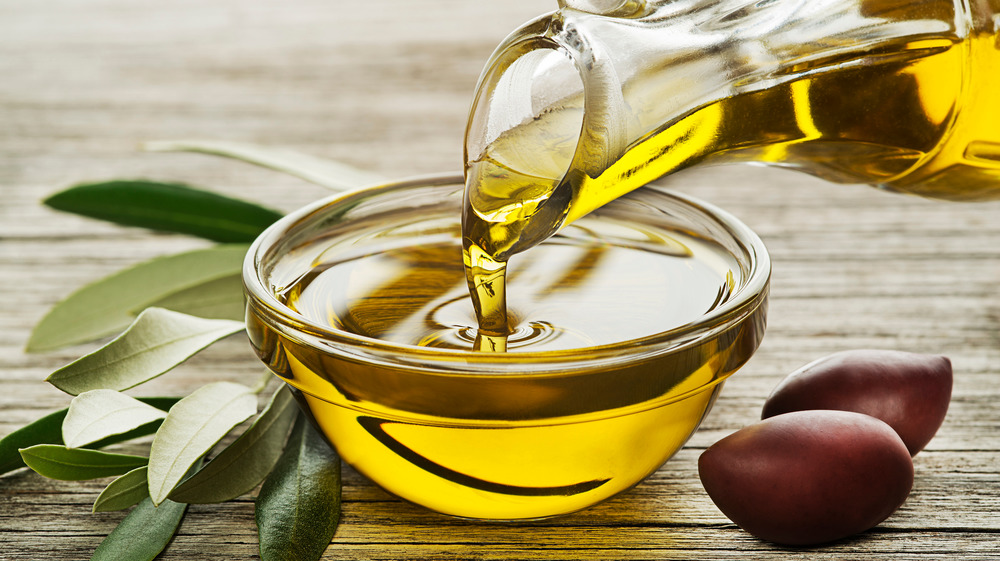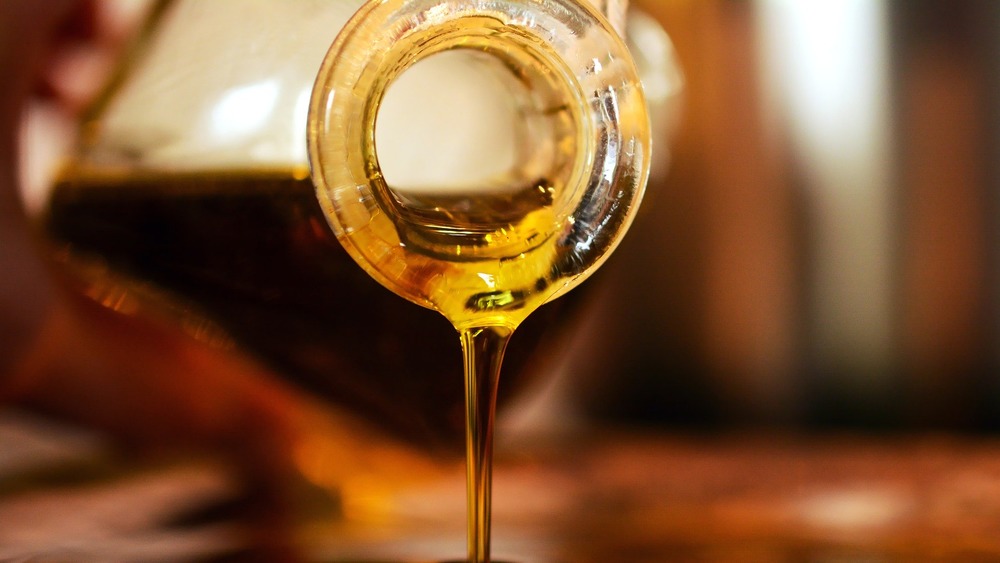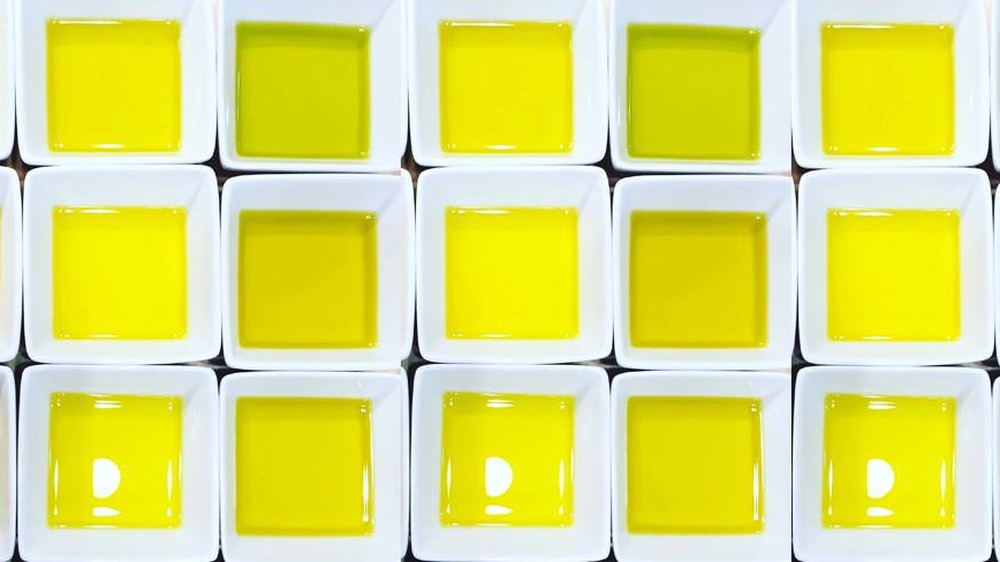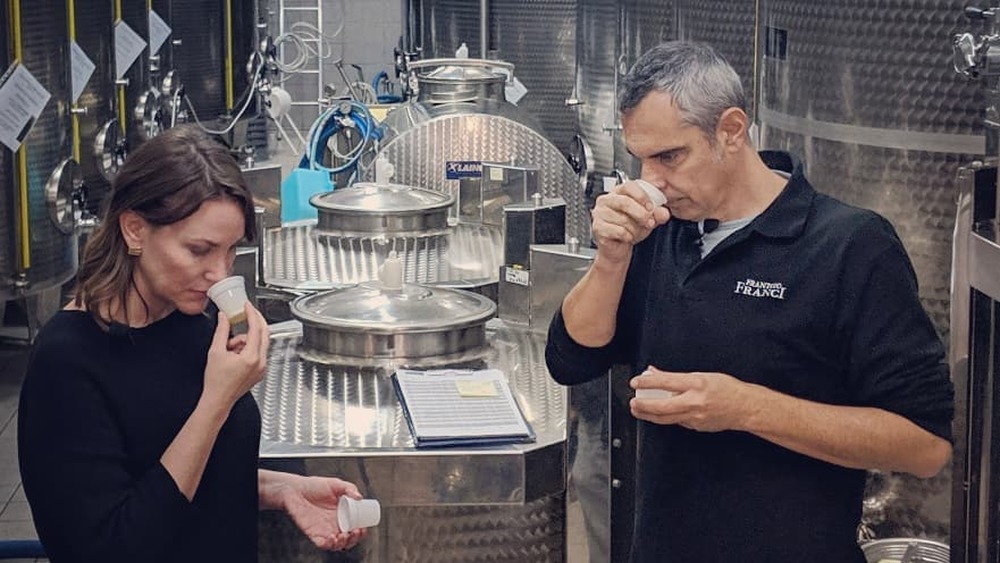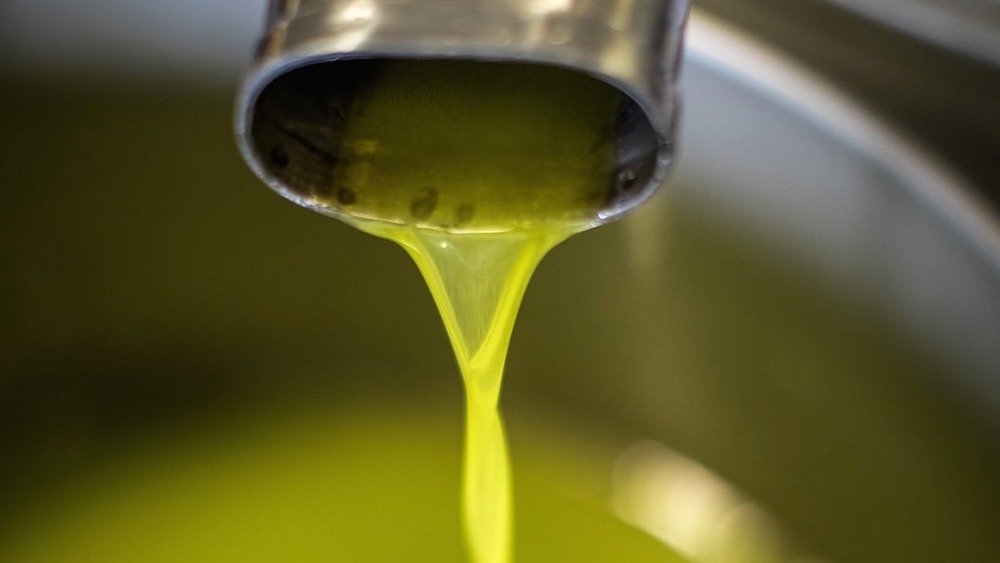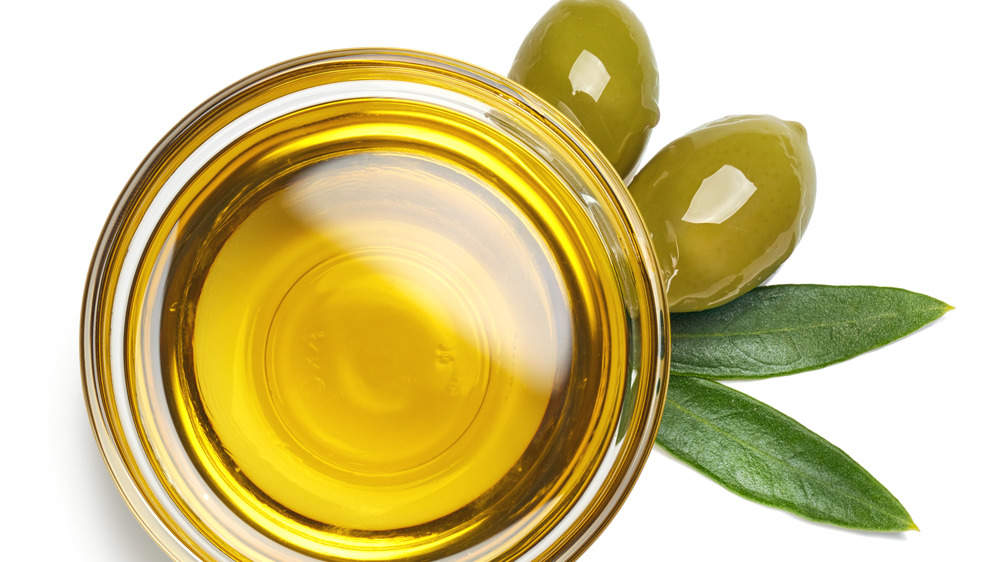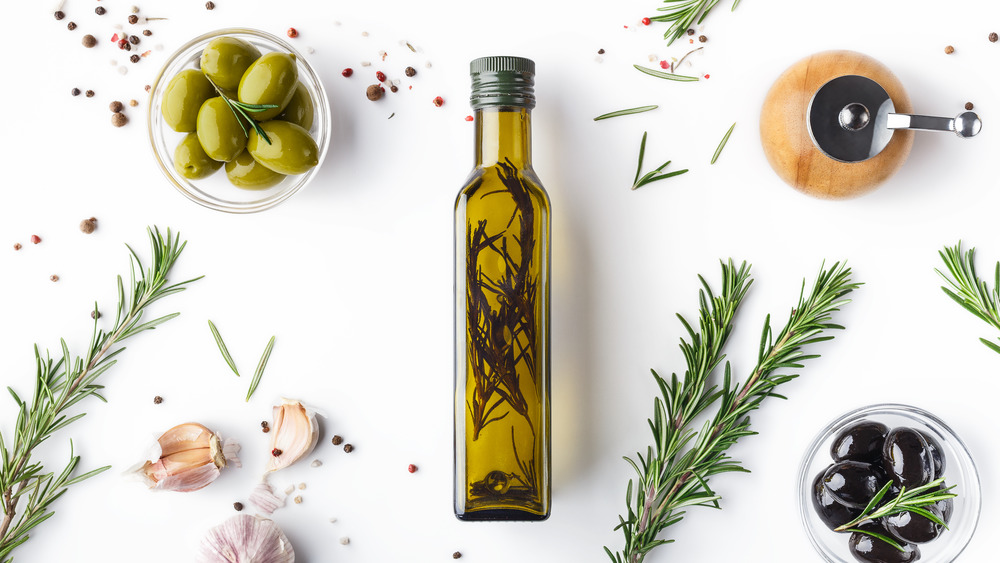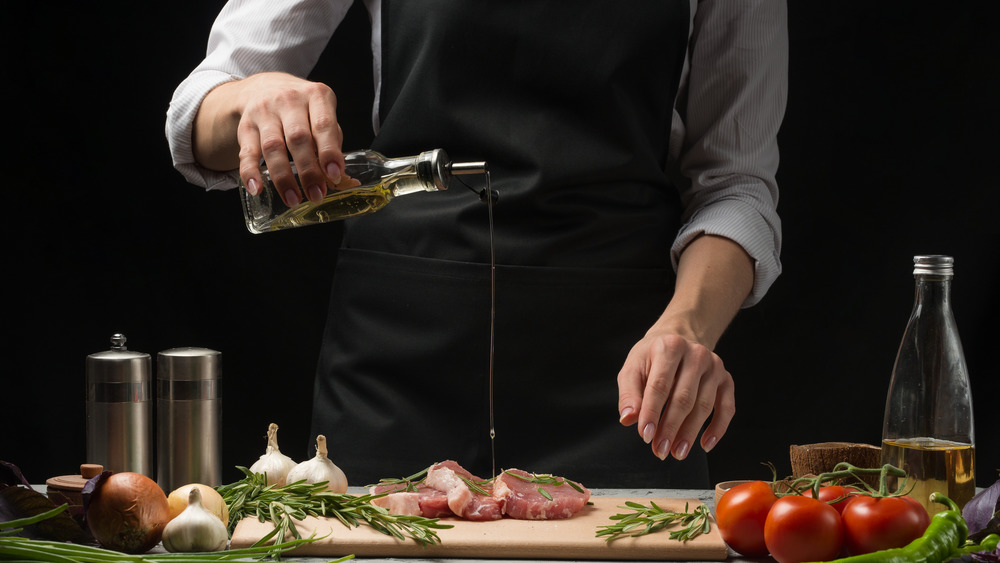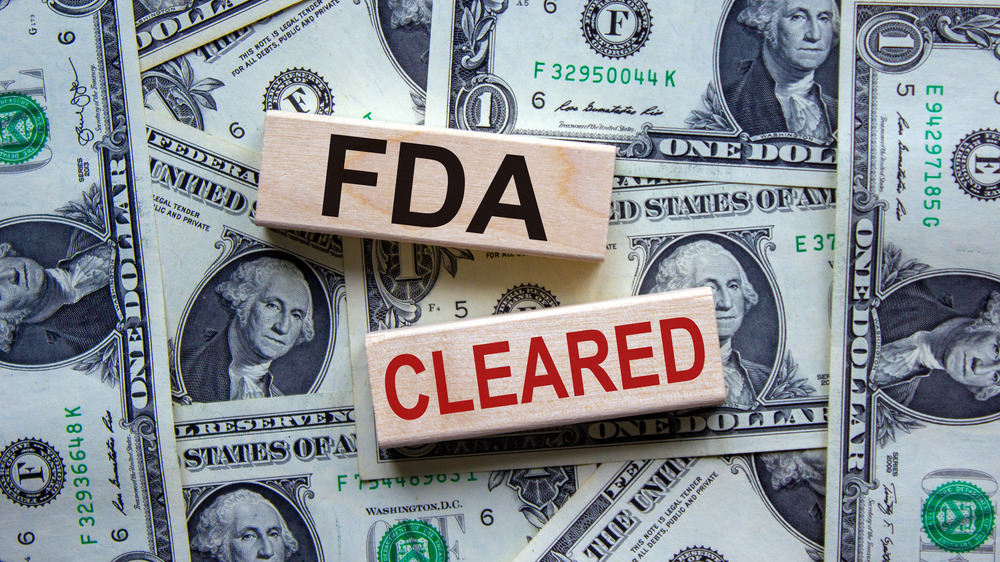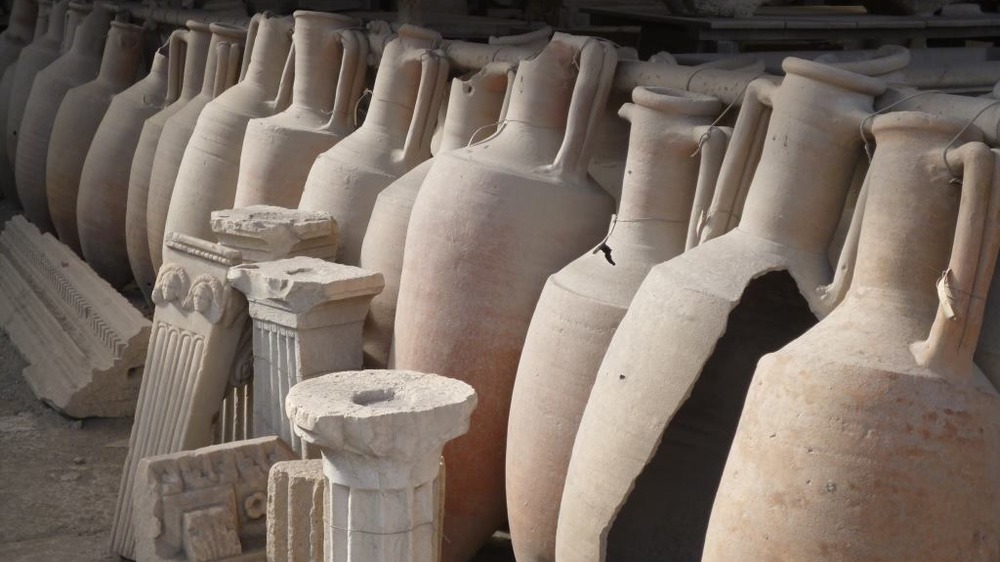The Real Reason Your Olive Oil Is Probably Fake
There are healthy foods that taste awful and unhealthy foods that taste divine. Then there's authentic extra virgin olive oil, or as intimates refer it: EVOO — which tastes divine and boasts seemingly unlimited health benefits — if, indeed, it's authentic. Unfortunately, this is rarely the case.
Investigative journalist Tom Mueller is author of the whistleblowing classic Extra Virginity, which blew the lid off the olive oil trade by exposing how rampant it is with fraud. Mueller shocked America when he claimed to 60 Minutes that "around 75 to 80 percent" of extra virgin olive oils sold in the U.S. are fraudulent.
Olive oil fraud has been around for thousands of years. Cuneiform tablets found in Ebla testify to royal inspectors visiting olive mills to monitor olive oil production. Even in Homer's day, EVOO was treated like "liquid gold."
More recently, fraud has had life-threatening consequences. In the early 1960s, olive oil doctored with jet engine oil left 10,000 people in Morocco seriously ill. In 1981, over 20,000 people in Spain were poisoned from toxic rapeseed oil labelled as olive oil. Although today's frauds don't always have such dire consequences, they wreak havoc on economies, livelihoods, and the future of those who produce authentic EVOO — while competing against cheap fakes stealing their "extra virgin" legitimacy. As rising demand transforms EVOO into an increasingly valuable commodity and fraudsters find ingenious new ways of counterfeiting it, the reasons why your olive oil is probably fake continue to grow.
Your olive oil is from Italy (supposedly)
Surprisingly, Italy only makes 15 percent of the world's olive oil. Even so, as The Guardian reports, it's the second largest exporter of olive oil after top producer Spain, which dominates 45 percent of the global market (albeit with prices 60 percent cheaper than Italy's). In recent years, due to factors ranging from changing weather patterns to ongoing attacks from deadly Xylella fastidiosa bacteria, Italy's production levels have plunged to record lows while prices of EVOO have gone up. The Guardian reports that 2020 output is predicted to drop by 26 percent in comparison to those of 2019.
The upshot is that while demand for Italian olive oil rises, there's far less of it to go around, making "Made in Italy" designations both highly coveted — and highly falsified. As The New York Times warned, "much of the 'extra-virgin Italian olive oil' flooding the world's market shelves is neither Italian nor virginal."
As Larry Olmsted, author of Real Food, Fake Food, notes, much of the oil that comes from Italy is bottled but not produced there. In recent years, countless undercover operations by the Italian police have uncovered massive scams in which tons of cheap, low-quality oils from Syria, Turkey, North Africa, and Spain are being bottled and sold as authentic Italian extra virgin to foreign markets. Among the biggest victims of this olive oil fraud is the U.S., to which Italy exports around 30 percent of its olive oil.
While olive oil supply dwindles, demand expands
In 2013, a report published by the European Parliament crowned olive oil as Europe's most adulterated, tampered with, and counterfeited agricultural product. Despite attempted legislation and crackdowns, a 2020 report by the U.S.'s American Botanical Council found that adulteration of olive oil is still rampant. The report highlights two major reasons for the ongoing fakery: low availability of high-quality olive oil and soaring demand.
Much more valuable and beneficial than other vegetable and seed oils, all-natural extra virgin olive oil involves much more care, time, and effort to produce. Faking it amounts to making it — in terms of money. The financial rewards have skyrocketed in keeping with demand. According to Statista, in the last 20 years, Americans' olive oil consumption has increased by 58 percent.
At the same time, Olive Oil Times reports that falling levels in Italy as well as other Mediterranean olive-producing countries such as Greece, Portugal, and Tunisia mean that worldwide production levels in 2020 are down at the same time as demand is soaring, particularly for high-quality extra virgin olive oil. According to MarketWatch, the global olive oil market — whose value in 2020 is $16.6 billion — is predicted to expand by 5.8 percent over the next five years. You do the math.
Olive oil is considered 'yellow gold'
A big reason for all the fake EVOO on supermarket shelves can be traced to the Italian mafia. Or rather, the "Agromafia." With counterfeit olive oil offering profit margins as high as 700 percent, organized crime has switched from drugs to more lucrative "yellow gold." As one EU investigator observed in The New Yorker, "profits are comparable to cocaine trafficking, with none of the risks." A 60 Minutes investigation found that authentic additive-free EVOO can sell for $50 a gallon, fake olive oil costs a mere $7 to produce while yielding profit margins three times higher than that of cocaine.
As Securing Industry explains, in Italy, the Agromafia has infiltrated every step of the supply chain from farm to table. Organized crime influence extends from the price of olive crops and the way the fruit is transported and sorted to doctoring oil and mislabelling bottles. Even bottles stamped with Protected Designation of Origin (PDO) labels — which certify the contents hail from a renowned Italian olive oil region where they were subject to controls — have been subject to counterfeit.
The Agromafia even has control over supermarket chains, which helps explain why an estimated 50 percent of olive oil in Italian supermarkets is fake. In 2019, Italy's Agriculture Minister, Teresa Bellanova, claimed that Italy's illicit food trade was costing the country roughly $120 billion a year. Meanwhile, recent figures by Italian farming association, Coldiretti, estimate the Agromafia's annual turnover is around $29 billion.
There's too much 'confusion, snobbery, and ignorance' in the olive oil industry
One reason fakery is so common is due to countless myths and misinformation surrounding olive oil. The Guardian journalist Alex Renton recounts conducting a blind EVOO tasting in which a panel of "experts" — an olive oil importer, an Italian deli owner, and some renowned foodies — were given a dozen products to rate. The outcome was humiliating. The importer rated his own premium product "disgusting." The deli owner praised a suspect "Italian extra virgin" oil purchased for $2.37 at a discount store. And the foodies favored the scandal-tainted Bertolli brand, a leading brand in the U.S.
In Extra Virginity, Tom Mueller describes how Bertolli succeeded due to a perverse twist in European law that, until 2001, permitted any olive oil bottled in Italy to be sold as "Italian olive oil." According to Mueller, around 80 percent of Bertolli's oil wasn't from Italy at all, despite seductive references to "Passione Italiana" on the label. Moreover, like many of its competitors, Bertolli advertised its olive oils as being "smooth" and "gentle," adjectives associated with low-quality and doctored olive oils. A characteristic of authentic EVOOs are their bold flavors, often described as "bitter and pungent."
Consequently, many brands succeed at selling low-quality oils at high prices because they've convinced the average consumer that's what they want. Ironically, producers of authentic EVOO have difficulty selling the real deal because ill-informed consumers deem them to be overpriced and unpleasant-tasting.
Olive oil is surprisingly easy to doctor
While making high-quality extra-virgin olive oil is a complex, time-consuming, and expensive process, as Tom Mueller points out, faking it is relatively easy, rapid, and cheap. One of the most common counterfeit methods is to mix EVOO with lower grade olive oils from other countries or with other oils such as canola, colza, soy, and even hazelnut oil. The resulting mix then undergoes chemical coloring (using the likes of industrial chlorophyll) and flavoring (with beta-carotene).
Counterfeit oil is also deodorized, which involves producing oil from actual rotten olives. On its own, deodorized oil is inedible. However, after undergoing a gentle refining process that leaves few tell-tale chemical tracks, this neutral oil can be blended with real olive oil and sold as "extra virgin." Today, deodorized oil accounts for a significant portion of the fake olive oil that ends up on the world's supermarket shelves.
In recent years, quality inspectors have gotten increasingly wise to these deodorized oils. However, as Mueller concedes, there are so many different — and increasingly sophisticated, high tech — methods of deodorizing olive oil that the fraudsters are always seemingly a few steps ahead of the authorities.
And it's hard to detect fake olive oils
As methods of adulterating olive oil become more sophisticated, it's increasingly difficult for olive oil specialists and law enforcement, let alone consumers, to detect a fake.
Such scams often operate at high-tech refineries where EVOO is doctored with deodorized lampante oil (poor quality "lamp oil" made from spoiled olives, which can't be legally sold as food). The resulting product is difficult to detect via chemical analysis. Recognizing that laboratory tests often fail to detect fakes, in 1991, the European Union established strict taste and aroma requirements for all grades of olive oil. Guidelines stipulate that EVOO must have detectable levels of pepperiness, fruitiness, and bitterness while being devoid of 16 fraudulent taste traits, among them fustiness, mustiness, and grubbiness.
The E.U. also created official tasting panels certified by the U.N.'s International Olive Oil Council. As Flavio Zaramella, president of one of Italys' most distinguished olive oil associations, confessed to The New Yorker: "If there's one defect, it's not extra-virgin olive oil — basta, end of story,"
Yet, the North American Olive Oil Association argues taste tests aren't accurate indicators of purity because tasters can't always detect adulteration. While testers may be highly trained, purity can only be measured in a laboratory. The problem with lab tests, however, is applying them to all potentially suspect oil. According to a 2020 European Journal of Lipid Science article, despite advances such as cutting-edge infrared spectroscopy, it's still a major challenge to detect fraud.
Most olive oils are never tested
While taste tests and lab tests have their pros and cons, the biggest problem with testing olive oil's purity is that it often doesn't occur at all.
Lack of testing leads to another form of fraud, which is the fake classification of an olive oil. High-quality EVOO is often compared to a Grand Cru wine. By law, the "extra-virgin" designation can only be given to premium olive oils. However, as Tom Mueller explained in an NPR interview, unlike wine, taste tests for olive oil are "very, very rarely applied."
Moreover, as a 2020 article in Food Control underscores, even the most sophisticated methods are only applied to EVOO fraud incidents after the fact. So while testing might reduce the impact of a specific discovered fraud, they do little to prevent future incidents. According to Flavio Zaramella in The New Yorker, Italian authorities rarely carry out panel tasting tests. If they do, the tests only take place once the offending olive oil has already been bottled and sold. And if an oil does fail a taste test, it's common for powerful oil producers to demand a retest from a more favorable panel or to appeal the verdict by claiming the samples were tampered with.
Olive oil producers and retailers want to make a buck
In 2015, the National Consumer League (NCL) conducted a study. It purchased 11 popular olive oil brands from major retailers — including Whole Foods, Safeway, and Giant — only to discover that six out of the 11 weren't extra virgin at all. As Time reported, while NCL identified the five oils that passed the test, those that failed were kept secret. As NCL's executive director, Sally Greenberg, revealed, this was because the companies accused of faking it "made a huge stink." In 2019, the NCL conducted a follow-up study and discovered that half the bottles tested still failed to meet international standards for EVOO.
Such findings are all too common. Forbes cites an investigation into seven reputed Italian olive oil producers — among them Bertolli, Sasso, and Carapelli — that allegedly found all guilty of selling adulterated olive oil as extra virgin "made in Italy." Real Food/Fake Food author Larry Olmsted cites another supermarket test in which five best-selling brands of imported EVOO failed to comply with the basic legal requirements of EVOO.
The companies embroiled in accusations of fraudulent oil include Colavita, Primadonna, and Felippo Berio, which are also some of the leading brands on America's supermarket shelves. As olive oil expert/taster David Neuman stresses, after the press that olive oil fraud has received over the years, supermarkets are aware of what they're stocking.
Consumers are complicit (they want cheap olive oil)
If some retailers turn a blind eye to potentially fraudulent oils so that they can compete for customers with affordable prices, many consumers are only too willing to participate. Many consumers are aware that olive oil fraud exists. And they're also aware the extra virgin olive oil is both rare — and expensive. Yet, even so, many consumers easily overcome their well-founded fears. Seduced by bargain prices, well-known "reputable" brands, and meaningless industry buzzwords such as "pure," "Italian", and "traditional" (not to mention the folksy illustrations of Tuscan farms and Sicilian presses on the labels), they tamp down their misgivings as they head to the check-out counter.
Olive oil expert and taster David Neuman believes that over time, consumers have become conditioned to buying inexpensive bad oils, even if they're ashamed to admit they're encouraging ongoing fraud. As he tells Forbes, "The chain stores keep buying because it sells and everybody has become addicted to the low prices." Because of this, there's no incentive for retailers to stock authentic EVOO that is more expensive.
According to Forbes, unless you buy your EVOO directly from a producer or from a certified distributor, its "Italian extra virgin" cred is highly suspect. And yet, as Larry Olmsted points out, today, it's easier than ever before to buy real quality EVOO in the United States, including top-quality brands from California.
Olive oil laws are loose and enforcement is lax
Olive oil fraudsters are also encouraged by the absence of government control over olive oil imports. As David Neuman confessed to Forbes, the U.S. is the "dumping ground" for fraudulent olive oil, adding that it lacks the resources to monitor over 350,000 tons of olive oil entering the country annually.
According to Larry Olmsted, the Food and Drug Administration (FDA) has been aware about EVOO fraud for decades. Yet, based on its failure to conduct consistent testing, it seemingly views such fraud as relatively rare or an issue of little importance. Tom Mueller, who refers to the U.S. as an "oil criminal's dream," cites an FDA official who says the agency prefers to focus on products where there's an obvious public health issue. Yet, as a top European food fraud investor explained to 60 Minutes, if you adulterate EVOO with seed oil, such as peanut or sunflower oil, and contaminated bottles reach consumers who are allergic, "you are sending them bombs."
Meanwhile, despite pressure from experts, concerned citizens, and the American Olive Oil Producers Association, the FDA mostly depends upon large producers and trade groups, such as the North American Olive Oil Association (whose members are part of the industry itself) to signal potentially compromised oils. As an FDA chemist who was the agency's olive oil specialist for 50 years told The New Yorker, olive oil frauds will continue if the olive oil industry is in charge of monitoring itself.
Olive oil fraud has been around since the Roman Empire
If olive oil fraud continues unabated today, it may be for the simple reason that the practice of adulterating EVOO has existed since the beginning of time (or at least since the beginning of cooking). Ancient Greeks and Romans not only used olive oil in the kitchen, but also as soap, as fuel for lamps, and as a cure for ailments ranging from hair loss to excess sweating.
Tom Mueller describes the importance of the international olive trade in Ancient Rome where certain emperors were the equivalent of today's petroleum sheiks. Due to its value, there was also a flourishing olive oil fraud. Roman writers allude to oil merchants who added lard to their extra virgin olive oil and doctored cheap Spanish oil by adding herbs and roots.
Amphorae discovered upon Italy's Monte Testaccio reveal that anti-fraud measures were firmly in place back in the day. Each container of olive oil was stamped with the precise weight and quality of its precious contents along with details about the farm where the olives were pressed, the shipping merchant who imported the oil, and the imperial official who signed off on the veracity of all this info. Upon arrival, the amphorae would be checked again, to verify neither the quantity nor quality had changed during the voyage. Ironically, as Mueller underscores, the ancient Romans were seemingly more thorough and efficient in their anti-fraud measures than we are in the 21st century.
